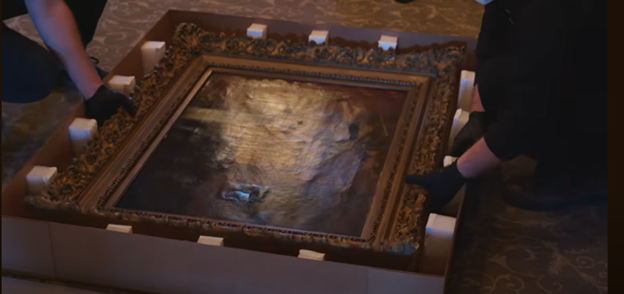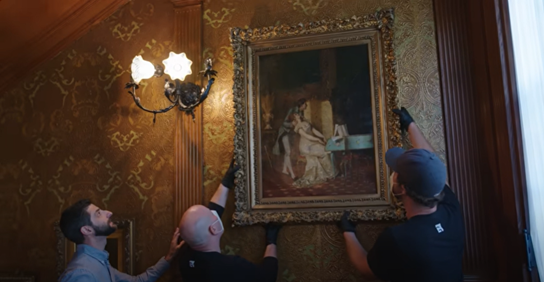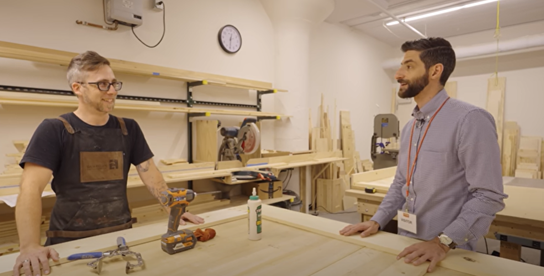Contributed by Nikita Werner on behalf of Guardian Fine Art Services.
Despite preventative conservation and environmental controls, museum collections are subject to agents of deterioration and on occasion, require professional treatment or repair. Sending artwork and cultural objects out to a conservator can be daunting for small and mid-sized museums. In the absence of in-house conservation staff, collections managers, registrars, and curators are left weighing the pros and cons of engaging with a specialist. The process can have many moving parts, so before you decide whether to add conservation services to your budget, or raise funds for a special project, it is important to plan for the entire process, and not just the treatment or repair.
Assessing your conservation needs.
Your institution will likely have policies or procedures that help staff decide whether the level of damage or deterioration warrants sending an object outside of the museum for specialized treatment. These guiding documents are a great place to start to determine whether your object’s condition is acceptable, or whether it requires attention. If you need more help making the decision, or your institution does not have formal guidance for collections repair, you may want to work through the three considerations below.
First, consider whether you have the in-house resources and expertise to safely and efficiently care for damage or deterioration. Do you have staff trained in a specific type of conservation treatment? Does the repair require specialized tools or materials that you either have on-hand or are easily obtained?
Second, think about the value of the piece within the institution. This can be related to monetary, or insurance replacement value, as well as educational, or functional value. A piece that is kept on permanent exhibition and regularly interacted with by visitors may be worth sending to conservation, even if it not particularly difficult to replace.

Guardian preparators built and packed a custom shadowbox to support a damaged painting at Pabst Mansion in a still from “Behind the Canvas” season 1, episode 6.
Third, it is important to consider the availability of funds for a conservation project. The cost of treatment or repair with a professional conservator varies broadly depending on the severity of the issue. Different conservators may have material types they specialize in, so it is helpful to ask around if you do not have someone your institution works with regularly. Along with the cost of professional conservation treatment, you will also need to budget for how the piece will be packed or crated, and how it will get to and from the conservator’s studio if the work will done off-site.
This is a good time to consider if the piece will have different storage or exhibition requirements when it returns to your institution. For instance, if a piece on exhibition was damaged by the hardware, it will be important to develop a new display strategy to prevent the damage from recurring. Likewise, if the storage conditions of the object were a contributing factor to its deterioration, you may wish to advocate for improvements to avoid wasting the investment in conservation.
Planning ahead is key.

Julian Baumgartner speaks with David Mueller, Guardian’s head crate builder in a still from “Behind the Canvas” season 1, episode 6.
After identifying a piece in your collection that requires professional conservation, it is time to think about how the piece will get to the conservator. Specialized packing may be necessary to provide the proper support for damaged elements. If handling the object poses a significant risk of increasing the damage, it may be a good idea to consult with a fine art services company to help decide the best way to deinstall and pack the piece. Likewise, the vibrations from transportation can put damaged or delicate pieces at higher risk. A professional fine art services company will offer transportation options that include vehicles with air ride suspension and climate control to mitigate the risk. Knowing your artwork or objects are in professional hands from start to finish will provide peace of mind and ensure your investment in conservation is protected.
I can pack and ship the piece myself; do I still need a fine art services company?
One of the most important aspects of planning for conservation is ensuring you have all necessary documentation throughout the process. Condition reporting pieces before and after conservation is important data to add to your catalog. Depending on the nature of the piece, and its value, you may also need a USPAP-compliant appraisal report for insurance purposes. Some fine art services companies like Guardian Fine Art Services have in-house project management professionals and an ISA-certified appraiser on staff to ensure your project is managed successfully start to finish.
What if you only need help with a few aspects of the process and can handle the rest on your own? A fine art services company offering a full suite of services can tailor your estimate to include only those services your institution needs. If you are feeling overwhelmed by planning a conservation project, contact a trusted company like Guardian to provide a free estimate. This first step will help you decide how and when to proceed.
Take a behind-the-scenes tour of Guardian Fine Art Services on Behind the Canvas with conservator Julian Baumgartner.
Are you curious about the inner workings of the fine art services industry and how professional services may benefit your institution? Chicago-based conservator Julian Baumgartner of Baumgartner Restoration sets out to answer questions about what goes on behind the scenes in the art world in his YouTube series Behind the Canvas. In Season 1, Episode 6 of the series, Julian visits Guardian’s facility in Milwaukee and tags along with the crew to pack artwork at the historic Pabst Mansion for transport to his Chicago conservation studio.

Julian Baumgartner speaks with David Mueller, Guardian’s head crate builder in a still from “Behind the Canvas” season 1, episode 6.
Here is what Julian has to say about the episode: “When priceless works of art need to move from one place to another, it requires more than a set of hands and a truck. Guardian Fine Art Services is at the forefront of handling, moving and storing these most precious of objects. And when the Pabst Mansion in Milwaukee, a historic landmark museum requires assistance, it’s Guardian they call. In this episode we travel with Guardian Fine Art Service to the Pabst Mansion to collect and store a painting and we get an unprecedented look inside a secure art vault.”
Guardian would like to thank Julian and the Baumgartner Restoration team for stopping by and touring our facility, and for providing a sneak peek into the world of art handling. Thanks also to the Pabst Mansion team for giving viewers a behind the scenes look at what goes into packing and transporting artwork for conservation.
If you have artwork in need of careful packing and transportation to an art preservation specialist, contact Guardian’s project team for more information.
